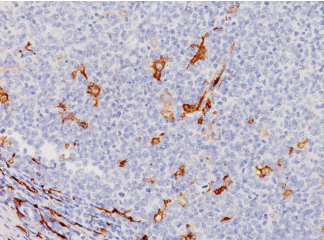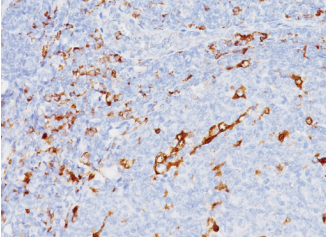Under Attack: Macrophages and their Markers
Under Attack: Macrophages and their Markers
Macrophages are white blood cells derived from monocytes and are known as the Pac-Man of the immune system. As the root of their name
infers, these “big eaters” engulf foreign substances, microbes, cancer cells, and any other non-specific protein through a process call
phagocytosis. These cells play a pivotal role in innate immunity and recruit other immune cells to initiate defense mechanisms. Macrophages
help maintain homeostasis and regulate tissue inflammation. Once a stimulus is recognized, macrophages activate by inducing production of
inflammatory cytokines, triggering signaling pathways, altering gene expression, and inducing acquired immunity1.
Macrophage classification is dependent on their mechanism for activation. M1 activation, or classical activation, is induced by intracellular
pathogens, bacterial cell wall components, lipoproteins, and cytokines such as interferon gamma and tumor necrosis factor alpha.2 M1
macrophages have pro-inflammatory, bactericidal, and phagocytic functions.3 Alternatively activated macrophages, or M2 activated
macrophages, function in constructive processes like wound healing and tissue repair, can turn off damaging immune system activation by
producing anti-inflammatory cytokines like IL-10, and regulate vacularization.3
Each macrophage has specific proteins on their cell surface. This specific expression allows them to be identified through flow cytometry
and immunohistochemistry. Differentiating which macrophage marker to utilize will be dependent upon the subset of macrophage and the
conditions of their local environment. Common macrophage markers include CD14, CD11b, CD11c, CD68, CD163, and CCR5.

CD163, a common macrophage maker, expressing on tonsil CD68, expressing on tonsil
To learn more about the macrophage markers, contact Biocare Medical anytime at 800-799-9499 or visit our website: www.biocare.net
References: 1. Geissmann F et al. Development of monocytes, macrophages and dendritic cells. Science. 327(5966):656-661 2. Roszer T. Understanding the Mysterious M2 Macrophage through Activation Markers and Effector
Mechanism. Mediators of Inflammation. 2015:816460. 3. Hesketh M et al. Macrophage Phenotypes Regulate Scar Formation and Chronic Wound Healing. International Journal of Molecular Sciences. 18 (7): 1545. 4. Human
and Mouse CD Marker Handbook. BD, https://www.bdbiosciences.com/documents/cd_marker_handbook.pdf 5. Kozloski, G. Macrophage Markers. Mater Methods. 2019;9:2758. https://www.labome.com/method/MacrophageMarkers.html 6. “Macrophages and their Markers.” Biorad, https://www.bio-rad-antibodies.com/macrophage-m1-m2-tam-tcr-cd169-cd-markers-antibodies.html 7. “Common Macrophage Markers.” R&D Systems. https://www.
rndsystems.com/research-area/common-macrophage-markers 8. Buck, S. Macrophages by flow cytometry. New insights through novel antibody reagents. Thermo Fisher Scientific, https://www.thermofisher.com/blog/behindthebench/
macrophages-flow-cytometry-novel-antibody-reagents/



